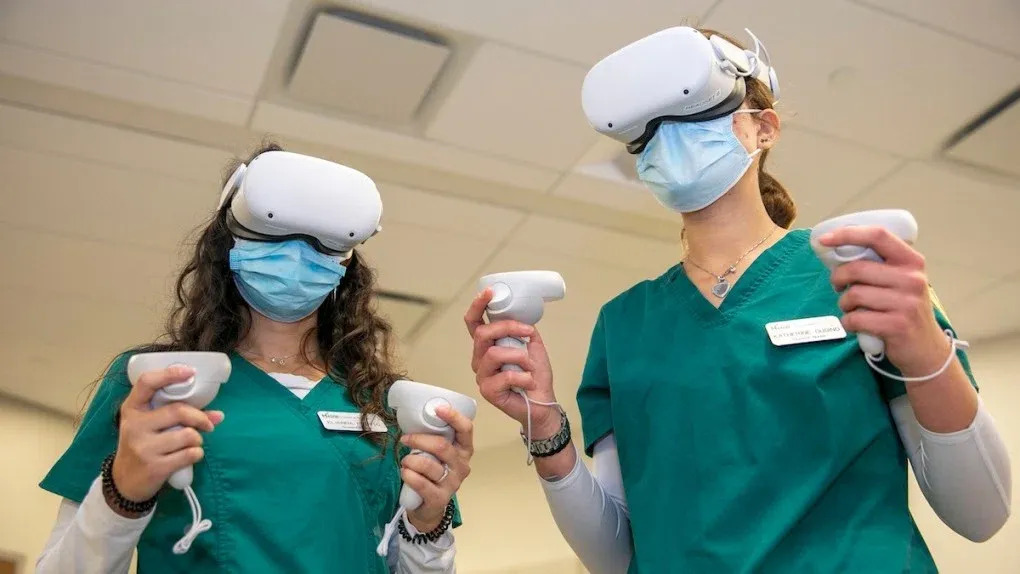The benefits of immersive audio experiences
Demand for immersive interactions is on the rise.
Everything from the increase of remote and hybrid work, to growing interest in the “Metaverse” has prompted rapid adoption of powerful new experiences in “Extended Reality”. However, the more companies explore the XR environment, the more they discover new demands for tools which help to embed users in digital experiences.
A truly engaging virtual, augmented, or mixed reality interaction relies on more than just phenomenal video. Sound is also a significant component in how we understand a space, or interact with content. This is why “spatial audio” is now gaining so much attention.
According to some studies, the market for spatial audio will reach around $12.97 billion by 2026, and many leading companies like Apple, Microsoft, and Sony are already getting involved. Here are some of the major reasons why businesses with an interest in XR should consider investing in spatial audio.
1. Mimic Genuine Real-World Experiences
In an age of hybrid work and remote interactions, companies and developers are increasingly working on making digital experiences feel more like real-world conversations. While video and audio conferencing tools and similar solutions can replicate many of the components of a real-world interaction, they lack a significant level of immersion and presence.
Spatial audio replicates how sound is processed in real-life, to make interactions feel more authentic. After all, the sounds people hear everyday are complex. We listen to audio in three dimensions, noticing the position, and direction of the sounds we hear. In a physical meeting room for instance, we can sense where a person’s voice is coming from when they speak to us.
With spatial audio, it’s possible to make users feel like they’re sitting in a real space through immersive technology. In a virtual meeting room for instance, it would be possible to determine who is speaking based not just on their voice, but where the audio is coming from, helping to direct user attention. This can allow for more meaningful interactions.
2. Reduced Cognitive Load
Aside from making interactions and XR experiences more immersive, research also indicates spatial audio could assist in improving intelligibility and reducing the cognitive load required when following a conversation. Without spatial information, listeners need to focus on other audio characteristics to determine who is speaking in a conversation.
While these cues are often quite effective, helping us to follow along relatively easily in a conference call or virtual event, they do require an extra level of cognitive processing. Spatial cues, alternatively, can be distinguished regardless of a person’s attention span.
Digital meeting spaces like Hubbub and Skittish are becoming more popular for virtual events, webinars, and experiences where companies want to create simple and engaging interactions. With spatial audio, interactions feel more natural and human, as well as being easier to follow. This could be particularly important in an age where digital interactions are becoming more essential due to virtual events and hybrid work.
3. Enhanced Training Experiences
Research and development into spatial audio opportunities is paving the way for all kinds of unique interactions. Today’s companies can use immersive technology for everything from meetings and webinars to virtual events. However, the right technology could also be a powerful solution for training and educational requirements.
In many training scenarios, it’s important to help users learn how to respond to situations in an authentic environment. For instance, in a military environment where companies might use XR to train team members how to respond to threats, knowing how to listen for signs of trouble and detect where these audio cues are coming from is crucial.
Spatial audio also helps to position users in a more significant three-dimensional space when they’re training. It reminds them to pay attention to what’s going on all around them, rather than just focusing on what’s straight ahead in terms of virtual reality or AR visuals. In training initiatives, spatial audio can ensure employees develop instinctual skills.
4. Enhanced Wellbeing
The concept of “wellbeing” is becoming increasingly important for business leaders and customer service experts alike. Both employees and consumers now expect brands to show a significant level of empathy, and a commitment to excellent experiences. Spatial audio in the XR landscape can help with this. According to studies into spatial audio, this technology could make interactions more accessible.
There’s a chance the cognitive benefits of spatial audio could assist those suffering from hearing loss, and make it easier for various consumers and employees to interact. Other pieces of emerging research also suggest spatial audio could help to reduce stress in various environments.
For companies investing in XR for collaboration and similar workplace purposes, spatial audio can help to fill the missing gaps in a 2D representation of audio. The right technology can help to reduce feelings of isolation in the remote world of work, and minimize cognitive stress. This could allow businesses to attract a wider range of specialists to their team.
5. Improved User and Customer Experiences
Perhaps most importantly, spatial audio can significantly improve the experience of consumers, and users implementing XR solutions. Spatial audio makes the digital world more “real” and authentic, boosting the interactions we have on a regular basis. For instance, in an environment where a manufacturing company might want to guide a specialist around a virtual twin of a workplace, spatial audio can help to make the individual feel like they’re really in the environment.
Increasingly, as audio technology evolves, we’re also becoming more adept as human beings at recognising the presence of spatial audio cues. Customers will be able to tell the difference between the psychological experience of a VR environment enhanced with spatial audio, and a lower-level VR interaction. This could make spatial audio into a powerful differentiator for brands.
As the metaverse continues to pave the way for a wider number of extended reality interactions, spatial audio could quickly become a crucial tool for enabling enhanced experiences at every stage of the customer and employee journey.
Quelle:




